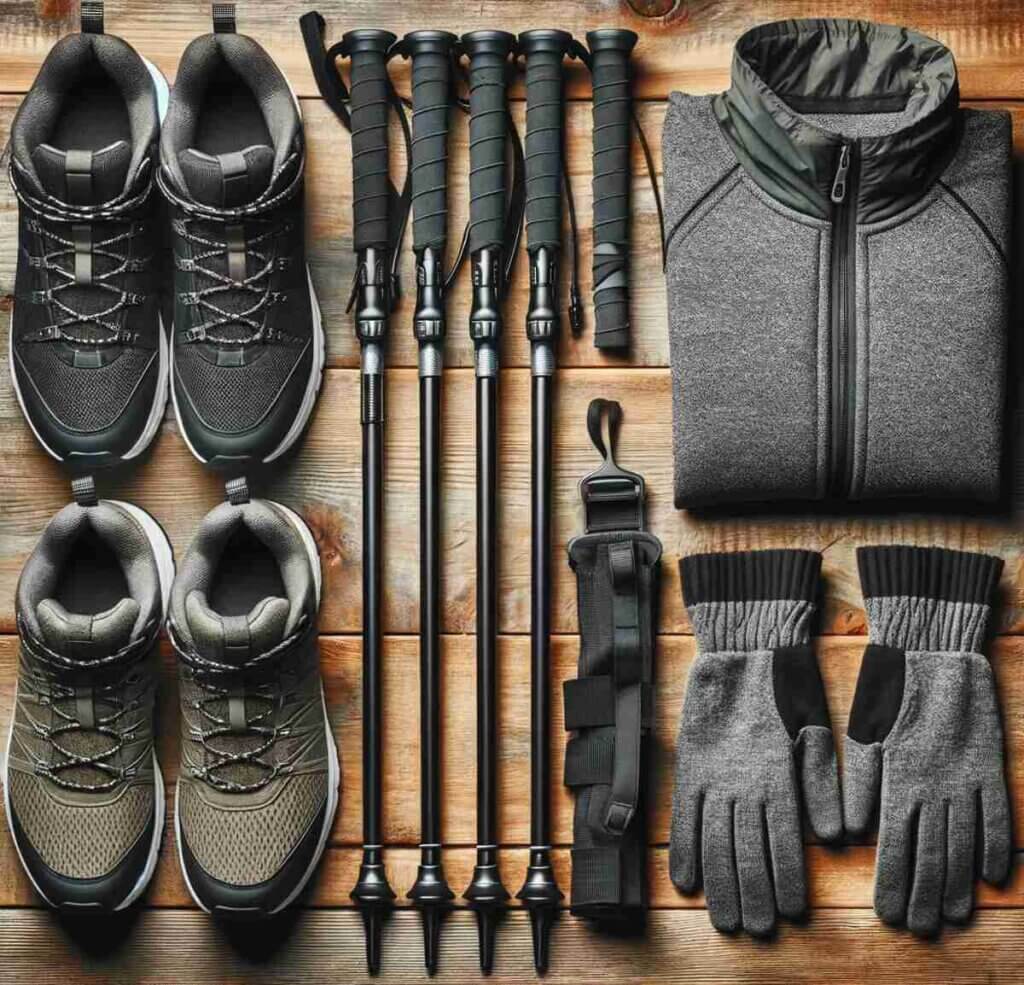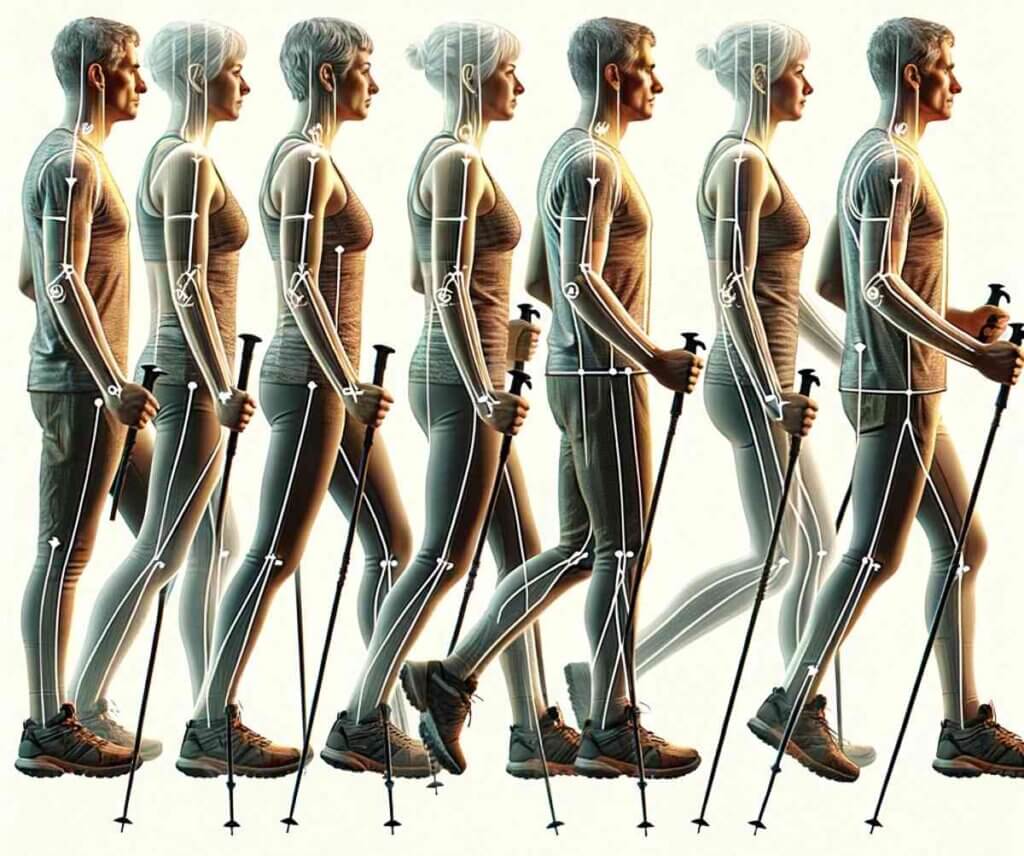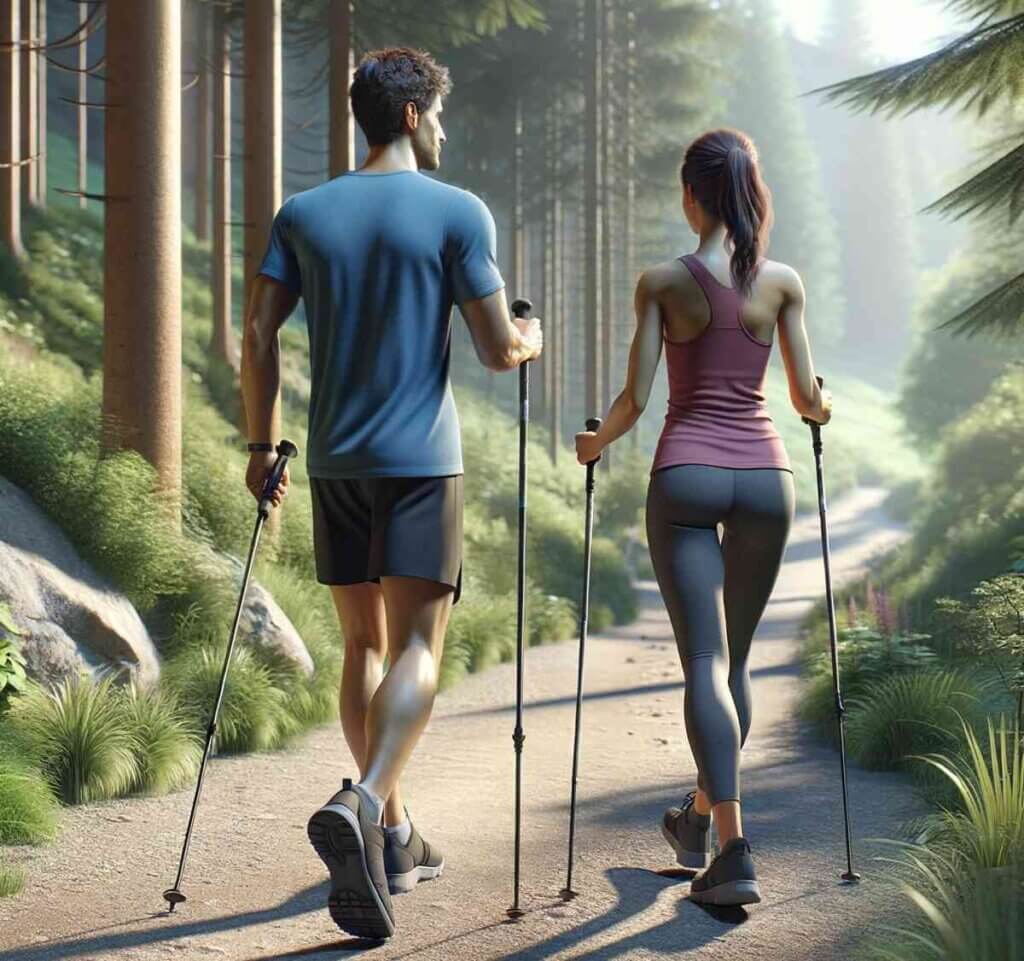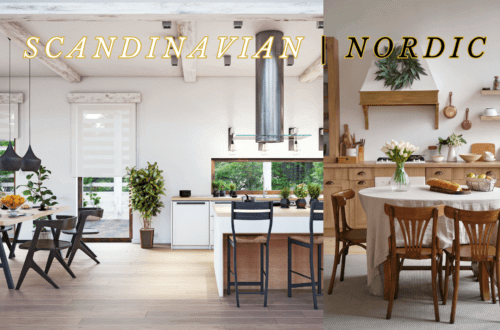
Nordic Walking 101: How to Nordic Walk and its Benefits
In the land of the midnight sun and the northern lights, where the landscapes are as varied as they are breathtaking, there’s a practice that encapsulates our love for the outdoors – Nordic Walking. Originating from the Nordic countries, this form of walking, enhanced by the use of specially designed poles, has evolved into a popular fitness activity worldwide. As a Norwegian, I’ve grown up witnessing and participating in this activity, which is not only a fantastic way to exercise but also a profound way to connect with nature.
Table of Contents
What is Nordic Walking?
Nordic Walking, at its core, is walking with the aid of poles, similar in design to ski poles. It was initially a summer training regime for cross-country skiers. The use of poles engages the upper body muscles, turning a simple walk into a full-body exercise. It’s low impact yet highly effective – suitable for people of all ages and fitness levels. The beauty of Nordic Walking lies in its simplicity and the way it amplifies the benefits of regular walking.

The Nordic Connection
The practice has deep roots in the outdoor traditions of Nordic countries like Norway, Sweden, and Finland. Here, staying active and connecting with nature is a way of life, deeply ingrained in our culture. Nordic Walking encapsulates this ethos, combining physical health, mental well-being, and an appreciation for the environment. It’s a reflection of the Nordic spirit – a love for the outdoors and a commitment to maintaining a healthy, balanced lifestyle.
How to Nordic Walk?
To get started with Nordic Walking, you need a pair of Nordic Walking poles and a suitable outdoor space. Here’s quick guide below, before the detailed step-by-step guide:
- Choosing the Right Gear: Select poles that are the correct height (your elbow should be at a 90-degree angle when holding the poles). Wear comfortable, supportive footwear and dress according to the weather.
- The Technique: Hold the poles with a relaxed grip. As you walk, plant the pole on the ground at an angle, pushing against it as you move forward. Coordinate the pole plant with the opposite foot’s stride.
- Arm Movement: Your arms should swing naturally from your shoulders. As the left foot goes forward, the right pole should come forward, and vice versa.
- Posture and Gait: Keep your posture upright with your chest open and shoulders relaxed. Look forward, not down at your feet. Your stride should be natural and comfortable.
Step 1: Gearing Up for Nordic Walking

Before you start, it’s crucial to have the right equipment:
- Nordic Walking Poles: These are different from trekking poles. They should reach up to your elbows when your arms are at a 90-degree angle. Look for poles with comfortable, supportive straps.
- Footwear: Opt for shoes that provide good support and grip. Depending on the terrain, you might choose between trail shoes and regular walking shoes.
- Appropriate Clothing: Dress for the weather. Layers work well for adjusting to changes in temperature during your walk.
Nordic Walking Poles
Selecting the correct Nordic Walking poles is crucial for effective and comfortable walking. Unlike standard trekking poles, Nordic Walking poles are designed to enhance your walking workout. The ideal pole height should allow your elbows to be at a 90-degree angle when the poles’ tips touch the ground. This posture ensures effective leverage during your walk. Look for poles with ergonomic handles and supportive straps, which will provide comfort and reduce strain on your hands.
Footwear
The right footwear can significantly impact your Nordic Walking experience. For most terrains, a pair of sturdy, well-cushioned walking shoes with good arch support will suffice. However, if you’re planning to walk on uneven or soft surfaces, like forest trails, opt for trail shoes with more grip. Ensure your shoes are comfortable for long distances and offer good heel support to prevent injuries.
Appropriate Clothing
Your clothing should be suitable for the weather and the intensity of your exercise. Layering is key. Start with a moisture-wicking base layer to keep sweat away from your skin. Add a breathable, insulating layer for warmth, and top it off with a waterproof and windproof jacket for protection against the elements. Also, consider wearing a hat and gloves in colder weather, and always protect your skin with sunscreen in sunny conditions.
Step 2: The Nordic Walking Technique
- The Grip: Hold the poles with a relaxed grip. Avoid gripping too tightly as it can cause tension in your arms and shoulders.
- Pole Planting: Plant the poles at an angle, slightly behind your body, and push down and back as you move forward. This engages your upper body muscles effectively.
The Grip
Holding the poles correctly is essential. Your grip should be firm yet relaxed, avoiding unnecessary tension in your hands, wrists, and forearms. Many Nordic Walking poles have ergonomically designed grips and straps that secure around your wrist, allowing you to maintain a comfortable grip without having to clutch the pole tightly.
Pole Planting
Pole planting is a fundamental aspect of Nordic Walking. Plant each pole at a slight angle towards the rear of your body, not directly downwards. As you stride forward, use the pole to push off, engaging your upper body muscles. This technique adds an upper body workout to your regular walking routine, making Nordic Walking a full-body exercise.
Step 3: Coordinated Movement
- Arm and Leg Coordination: When your left foot steps forward, your right pole should touch the ground and vice versa. This opposite arm-leg coordination is key to effective Nordic Walking.
- Natural Arm Swing: Allow your arms to swing naturally from your shoulders. This movement should be fluid and relaxed, enhancing your momentum.
Arm and Leg Coordination
The coordination between your arms and legs is a unique aspect of Nordic Walking. As you step forward with your left foot, your right arm and pole should move forward too, and vice versa. This opposite arm-leg coordination not only helps to balance your movements but also maximizes the workout efficiency.
Natural Arm Swing
Your arms should swing naturally from the shoulders, maintaining a fluid and relaxed motion. This natural swing helps propel your body forward and contributes to the rhythm of your walk. The movement should feel comfortable and natural, without any forced or exaggerated swinging.
Step 4: Perfecting Posture and Gait

- Upright Posture: Keep your back straight, chest open, and shoulders relaxed. Good posture is crucial for breathing efficiently and walking comfortably.
- Eye Focus: Look ahead, not down at your feet, to maintain balance and posture.
- Stride: Walk with a natural, comfortable stride. The poles are there to enhance your walk, not alter it significantly.
Upright Posture
Maintaining an upright posture is vital for effective Nordic Walking. Stand tall with your back straight, shoulders relaxed, and chest open. This posture ensures optimal lung capacity for breathing and prevents strain on your back.
Eye Focus
Keep your gaze forward and your head up. Focusing your eyes ahead, rather than looking down at your feet, helps maintain balance, ensures better posture, and allows you to enjoy your surroundings.
Stride
Your stride during Nordic Walking should be natural and comfortable. The poles are there to enhance your walk, not to alter your natural stride length significantly. Ensure your steps are controlled and stable, allowing for a smooth walking rhythm.
By following these steps above, you can enjoy the full benefits of Nordic Walking. Remember, practice makes perfect. Over time, these techniques will become second nature, allowing you to fully immerse in the joy and health benefits of this wonderful outdoor activity.
Nordic Walking is an excellent way to enjoy the outdoors while getting a full-body workout. It’s suitable for all ages and fitness levels, and with the right technique, it can significantly improve your physical health and mental well-being. Be patient with yourself, and most importantly, enjoy the process and the beauty of nature around you.
Benefits of Nordic Walking
Nordic Walking is more than just a walk in the park. The benefits are manifold:
- Full-Body Workout: It engages up to 90% of the body’s muscles, including arms, shoulders, chest, and core.
- Cardiovascular Improvement: It increases heart rate more than regular walking, enhancing cardiovascular health.
- Joint-Friendly: The poles provide support and reduce the impact on knees and joints.
- Mental Health: Being outdoors and engaging in physical activity is great for mental health, reducing stress and anxiety.

Full-Body Workout
Nordic Walking transforms a simple stroll into a dynamic full-body workout. By incorporating the use of poles, it engages a wide range of muscle groups, far more than standard walking.
Engaging Multiple Muscles
When you Nordic Walk, you’re not just working your legs. The action of using the poles actively involves the arms, shoulders, chest, and core. This means up to 90% of your body’s muscles are engaged during a Nordic Walk. The result is a more balanced muscle strengthening and toning across your entire body, not just the lower half.
Cardiovascular Improvement
Nordic Walking elevates the heart rate more effectively than regular walking. This makes it an excellent cardiovascular workout, boosting heart health and endurance.
Enhanced Heart Rate
The additional upper body movement in Nordic Walking contributes to a higher heart rate compared to regular walking. This increased cardiac activity helps to improve overall cardiovascular health, making your heart stronger and more efficient at pumping blood. Regular Nordic Walking can lead to better endurance, reduced blood pressure, and improved circulation.
Joint-Friendly Exercise
One of the significant advantages of Nordic Walking is its low impact on joints, making it an ideal exercise for people of all ages and fitness levels.
Reduced Impact on Joints
The poles used in Nordic Walking provide support and stability, taking some of the load off your knees and joints. This reduces the impact compared to running or jogging, making it a safer option for individuals with joint concerns or those who are recovering from injuries. It’s also a great exercise for older adults looking to maintain fitness without risking joint health.
Mental Health Benefits
Nordic Walking isn’t just beneficial for physical health; it also has a positive impact on mental well-being.
Stress Reduction and Mental Clarity
Being outdoors and engaging in physical activity like Nordic Walking can significantly reduce stress and anxiety levels. The rhythmic nature of the walk, combined with the outdoor environment, promotes a sense of relaxation and mental clarity. It also helps in releasing endorphins, the body’s natural mood elevators, contributing to improved overall mental health.
Nordic Walking is a versatile and accessible form of exercise that offers a wide range of health benefits. Whether you’re looking to improve your physical fitness, protect your joints, or boost your mental health, this full-body workout is an excellent choice for a holistic approach to well-being.
Nordic Walking in Different Settings
Nordic Walking, a versatile exercise originating from the Nordic countries, has gained popularity across the globe due to its adaptability to various settings. From the tranquil forests of Scandinavia to the diverse landscapes of the USA, UK, Canada, and Australia, this activity can be enjoyed in a myriad of environments.

Nordic Forest Trails: Feeling Nature’s Tranquility
The dense, green forests of countries like Norway and Sweden offer a perfect backdrop for Nordic Walking. These trails provide a peaceful environment, allowing walkers to immerse themselves in nature. The soft forest floor cushions your steps, reducing impact on the joints, while the natural terrain offers a varied workout, engaging different muscle groups as you navigate through uneven paths.
Coastal Paths: The Refreshing Seaside Experience
Coastal paths, such as those found in Sweden and along the picturesque coastlines of countries like the UK and Canada, offer a unique Nordic Walking experience. The sound of waves, the smell of saltwater, and the sight of the horizon create an invigorating atmosphere. Walking on sand can increase the workout’s intensity, while firm coastal paths provide an even terrain for a more relaxed walk.
Urban Parks: The Convenience of City Walking
Urban parks in cities across the USA, UK, Canada, and Australia provide an accessible option for Nordic Walking. These settings offer the convenience of being close to home while still offering the benefits of outdoor exercise. Parks often have well-maintained paths, making them ideal for beginners or those looking for a consistent walking surface.
Mountain Trails: Challenging Terrain for the Adventurous
For those seeking a more challenging Nordic Walking experience, mountain trails in regions like the Canadian Rockies or the Appalachian Trail in the USA are excellent options. The varying inclines and rugged terrain provide a more strenuous workout, testing your endurance and strength. This setting is ideal for experienced Nordic Walkers looking to push their limits.
Suburban Neighborhoods: Nordic Walking Close to Home
You don’t always need to venture far for Nordic Walking. Suburban neighborhoods, with their quiet streets and local parks, can be perfect for a daily Nordic Walking routine. This setting is especially beneficial for those who prefer to stay close to home or have limited time for their workouts.
Nordic Walking’s adaptability to various terrains and landscapes makes it a uniquely versatile form of exercise. Whether in the serene forests of Norway, the rugged mountains of the USA, the coastal paths of the UK, the urban parks of Canada, or the suburban neighborhoods of Australia, Nordic Walking offers a refreshing and effective way to stay fit, engage with nature, and explore the beauty of different environments.
Summary: Nordic Walking
Nordic Walking is a testament to the Nordic way of life, where the great outdoors is both a playground and a sanctuary. It’s an activity that offers numerous health benefits, is accessible to all, and most importantly, it’s a way to reconnect with the natural world. Whether you’re a seasoned outdoor enthusiast or someone looking to start a new fitness routine, Nordic Walking is a fulfilling and enjoyable way to keep active and embrace the beauty of the outdoors.



